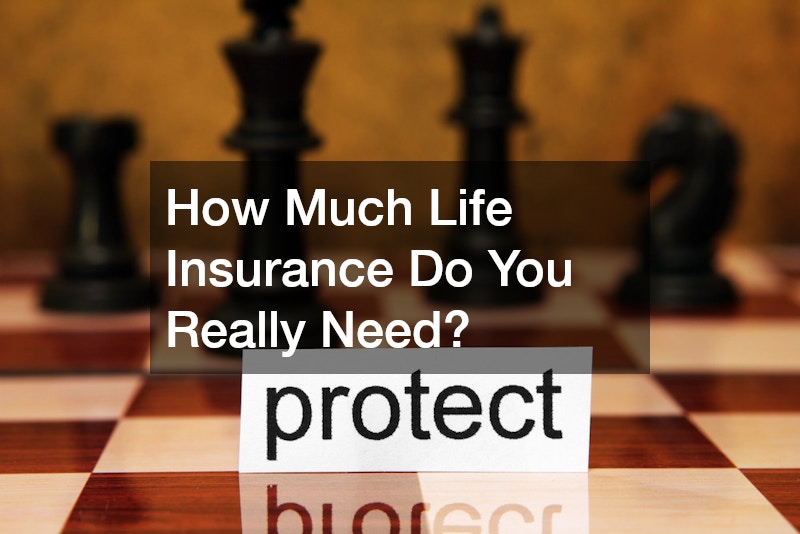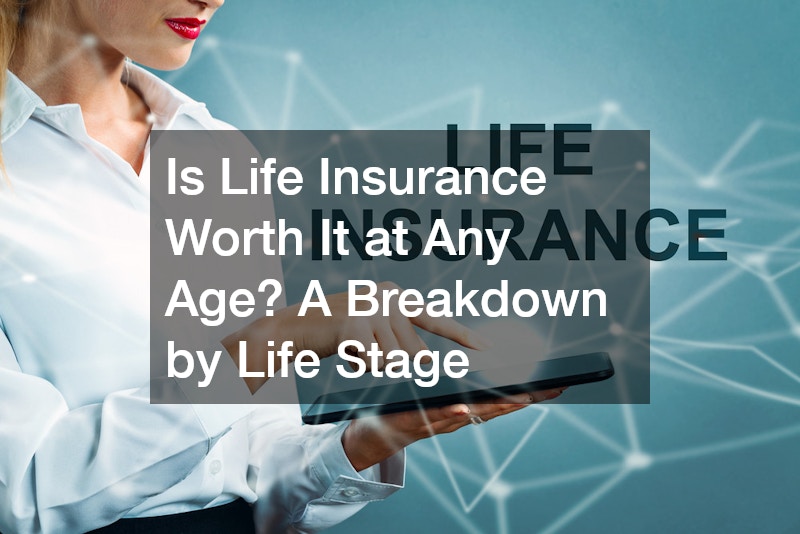
Life insurance often feels like one of those financial products you’ll “get to later.” But the truth is, understanding when and why to buy life insurance can make all the difference in securing your family’s future—and sometimes, even your own financial peace of mind. Whether you’re in your 20s, 40s, or enjoying retirement, life insurance plays different roles depending on your life stage.
In this article, we’ll explore whether life insurance is worth it at any age, taking a closer look at what makes sense during various phases of life. If you’re curious about how—and when—life insurance might fit into your personal plan, this breakdown will help you make an informed decision.
Why Consider Life Insurance in the First Place?
Before diving into age-specific recommendations, let’s address a common question: Why do people buy life insurance at all?
The primary purpose of life insurance is financial protection. If you die unexpectedly, your policy can cover:
- Funeral expenses
- Outstanding debts
- Ongoing living costs for dependents
- Mortgage or rent
- Children’s education
- Business liabilities
But beyond basic protection, life insurance can also be a wealth-building or tax-saving tool, depending on the type of policy and how long you hold it.
Life Insurance in Your 20s: Is It Too Early?

Starting Early Has Big Benefits
Your 20s might feel too soon to think about life insurance—especially if you’re still in school or building your career—but starting young can be a smart financial move.
Why It Might Be Worth It:
- Cheaper premiums: The younger and healthier you are, the lower your life insurance costs. A 25-year-old might pay 50–70% less for the same policy than someone in their 40s.
- Debt protection: If you have student loans or cosigned debt, your family could be left with the burden if you pass away unexpectedly.
- Future planning: Locking in a long-term policy early can give you peace of mind for future responsibilities, like starting a family or buying a home.
When It Might Not Be Worth It:
- No dependents
- No major debt
- Tight budget with other financial priorities like emergency savings or paying off high-interest loans
Bottom Line: If you can afford a small term policy, it may be worth it for the low cost and future flexibility.
Life Insurance in Your 30s: A Growing Priority
This Is When Life Starts Getting Real
Your 30s are often a decade of major life changes—marriage, kids, mortgages, and career growth. It’s also a time when your financial obligations begin to multiply.
Why It Might Be Worth It:
- Family protection: Your spouse or kids may depend on your income.
- Mortgage coverage: A term policy can ensure your home stays in the family, even if you’re gone.
- Better rates than later: Even if you didn’t buy in your 20s, your 30s still offer favorable rates for most healthy individuals.
Pro Tip:
- Choose term life insurance for affordability and coverage during your most financially vulnerable years (20–30 years is common).
- Consider riders like disability income or critical illness to enhance your coverage.
Bottom Line: If you have dependents or large financial obligations, life insurance in your 30s is often not just worth it—it’s essential.
Life Insurance in Your 40s: Is It Too Late to Get a Good Deal?
Not Too Late—But Costs Are Rising
By your 40s, your responsibilities likely include supporting children, paying down a mortgage, and maybe even helping aging parents. Life insurance becomes even more important, but it also becomes more expensive.
Why It Might Be Worth It:
- Protect your family’s lifestyle: Especially if you’re the primary earner.
- Plan for education expenses: College tuition costs are significant, and life insurance can help offset them.
- Business protection: If you own a business, insurance can fund buy-sell agreements or protect your employees.
What to Watch Out For:
- Higher premiums: A healthy 40-year-old may still get good rates, but health issues can increase costs quickly.
- Term length: Think ahead—choose a term that covers you until major expenses (like college tuition) are no longer an issue.
Bottom Line: Life insurance is still worth it in your 40s, especially if you haven’t built enough assets to self-insure your family.
Is Life Insurance Worth It in Your 50s?
Coverage Now Depends on Goals
By 50, your kids may be older, your mortgage smaller, and your savings more robust. But not everyone is ready to “self-insure” just yet.
Why It Might Be Worth It:
- Supplement retirement plans: Some use whole life insurance as a tax-advantaged savings vehicle.
- Support adult children or special-needs dependents: Not all responsibilities end when your kids move out.
- Leave a legacy: Many people buy life insurance to ensure they can leave something behind.
Considerations:
- Underwriting is tougher: Health screenings are stricter, and premiums are higher.
- Whole life insurance might be better: If you’re focused on legacy or long-term estate planning.
Bottom Line: If you still have financial dependents or want to enhance your legacy, life insurance can be worth it in your 50s—but be strategic about the type and size of the policy.
Life Insurance in Your 60s and Beyond: What’s the Value?
Focus Shifts to Final Expenses and Estate Planning
After retirement, many people wonder if life insurance is still relevant. The answer? It depends on your financial situation and long-term goals.
Is Life Insurance Worth It at This Age?
- Final expense coverage: Policies as small as $10,000–$25,000 can help cover funeral and medical bills.
- Estate planning tool: Whole life policies can be used to transfer wealth tax-efficiently.
- Support for a spouse: If your partner relies on your pension or Social Security, insurance can help bridge the gap.
When It Might Not Be Worth It:
- You have no dependents
- You’ve saved enough to cover final expenses and debts
- You’re on a fixed income and can’t justify the premiums
Bottom Line: In your 60s or 70s, life insurance is more about financial housekeeping than income replacement. It’s worth it if it aligns with your estate goals or fills a specific financial gap.
Types of Life Insurance: Which One Is Worth It for You?
Understanding your options can help you choose the right coverage for your life stage.
Common Types:
- Term Life Insurance
- Best for: Young adults, parents, and homeowners
- Coverage: Fixed term (10–30 years)
- Affordable and simple
- Whole Life Insurance
- Best for: Wealth building and legacy planning
- Coverage: Lifetime
- Higher premiums, but includes cash value
- Universal Life Insurance
- Best for: Flexible premium options
- Coverage: Lifetime, adjustable death benefit
- Investment component
- Final Expense Insurance
- Best for: Seniors
- Coverage: Covers funeral and small debts
- Easy to qualify
So, Is Life Insurance Worth It at Any Age?
A Life Stage Breakdown
Here’s a summary to help you decide when it’s most valuable:
| Age Group | Worth It? | Best Type | Primary Reason |
| 20s | Often | Term | Lock in low rates; debt protection |
| 30s | Definitely | Term | Family & mortgage coverage |
| 40s | Yes | Term or Whole | Income & legacy protection |
| 50s | Depends | Whole or Final Expense | Retirement supplement or estate planning |
| 60s+ | Sometimes | Final Expense or Whole | Covering end-of-life costs, tax benefits |
What Questions Should You Ask Before Buying Life Insurance?
Before signing up for a policy, ask:
- Who depends on my income?
- What debts or obligations would be left unpaid?
- Do I want to leave a financial legacy?
- How long do I need coverage?
- Can I afford the premiums long-term?
What Happens If You Wait Too Long to Get Life Insurance?
Procrastinating on life insurance may seem harmless—until it isn’t. As you age, not only do premiums increase significantly, but your health status becomes a major factor. If you develop a chronic condition like diabetes, high blood pressure, or even something more serious, you may either be denied coverage or face very high rates. Waiting too long could also mean you miss the window to lock in affordable term policies.
In your 20s and 30s, term life insurance could cost just $15–$30 per month. By your 50s or 60s, the same policy could exceed $100 per month or more. Worse, unexpected health issues can strike at any age, making early coverage a smart hedge against uncertainty. Simply put, the longer you wait, the more you pay—and the fewer options you’ll have.
How Much Life Insurance Do You Really Need?

Many people either overestimate or underestimate the coverage they need. A common rule of thumb is to aim for 10 to 15 times your annual income, but that’s just a starting point. You should also consider other factors:
- Current debts (mortgage, student loans, credit cards)
- Future expenses (kids’ education, medical bills)
- Your spouse’s financial dependency
- Any business interests
- Final expenses (funeral and burial)
Online calculators can give you a ballpark figure, but a personalized financial assessment offers a more accurate picture. Don’t forget to subtract your existing assets or savings from your total need. Having the right coverage—not too little, not too much—is key to making life insurance worth it at any age.
What are the Hidden Benefits of Life Insurance?
Life insurance isn’t just about death—it can also provide living benefits. Depending on your policy type, you may be able to:
- Borrow against the cash value of a permanent policy
- Withdraw funds tax-free for emergencies, education, or retirement
- Accelerate your death benefit if you’re diagnosed with a terminal illness
- Transfer wealth efficiently with potential estate tax advantages
Some modern policies even offer riders that cover chronic or critical illness, providing financial relief during life-threatening situations. In short, the right policy can serve as both protection and a financial planning tool. These added benefits often go overlooked but can add significant value to your long-term strategy, making life insurance more versatile and worthwhile than many people realize.
Final Thoughts: Tailor It to Your Life Stage
Life insurance isn’t one-size-fits-all. The right policy—and whether it’s worth it—depends on where you are in life, who counts on you, and what you want to leave behind.
The good news? You don’t have to figure it out alone. Speak to a licensed insurance advisor who can help tailor your options to your life goals and budget. Whether you’re 25 or 75, the right policy can bring both peace of mind and financial security for those you love.
